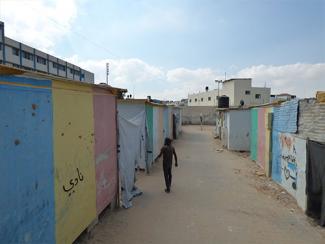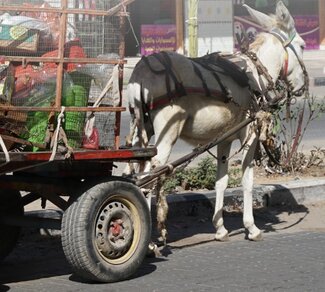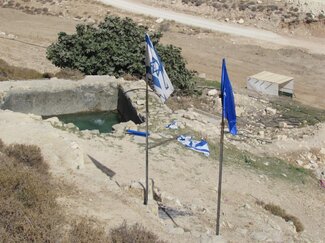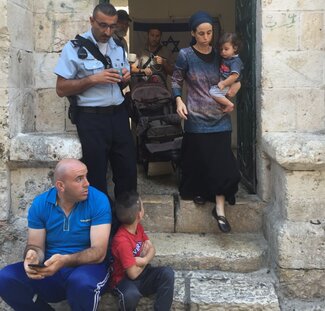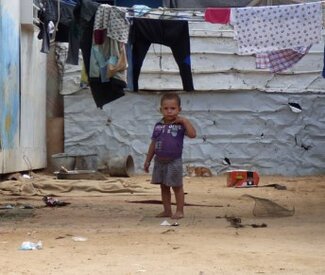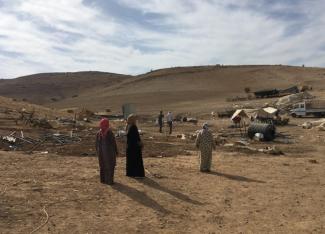On 19 October, the UN Special Coordinator for the Middle East Process, Nicolay Mladenov, briefed the Security Council on the serious challenges facing reconstruction efforts in Gaza following the 2014 hostilities: “Last week, I travelled to Gaza where I witnessed warehouses empty of construction materials… due to limitations of imports. No new residential reconstruction projects have been approved since March. In recent days the approval for some 80 projects – some of which had already been started - has been revoked by Israel. I saw residential buildings half-built. I met with families whose projects have been cleared for reconstruction, yet have not received any cement for months. I heard from those that have tried to navigate the web of rules governing the import of materials considered ‘dual-use’ with no luck or response.”
The Monthly Humanitarian Bulletin | October 2016
180 Palestinian households in East Jerusalem have eviction cases filed against them, putting 818 Palestinians at risk of displacement. 986 Palestinian structures in the West Bank demolished or confiscated by Israel in 2016, the highest since OCHA began recording in 2009. Two years since the 2014 hostilities, about 4,500 IDPs in Gaza still live in dilapidated caravans and are exposed to weather extremes. Thousands of households across the Gaza Strip are not connected to the sewage network, raising serious sanitation concerns.
In this document
The ten-year-long political dispute between Hamas in the Gaza Strip and the Palestinian Authority in the West Bank, along with the Israeli-imposed blockade and repeated outbreaks of hostilities, continue to severely disrupt the provision of basic services in Gaza, including those provided by Gaza’s 25 municipalities. These municipalities face profound challenges in meeting their responsibilities to a population approaching two million, crammed into one of the most densely populated and confined areas in the world.
The natural water spring of ‘Ein Fera’a, one the largest in western Hebron governorate, is the sole source of water for a herding community carrying the same name that moved close to the spring some 30 years ago. The residents comprise about 11 households with about 80 people in total, all registered refugees. They rely on the spring for domestic water consumption and for watering their livestock, which is their prime source of livelihood. The landowner of the spring, a resident of the nearby town of Dura, also uses the water for irrigating the adjacent land, where he grows seasonal vegetables and crops. On hot summer days and when there are water shortages, he also pumps water from the underground pool to sell to families in Dura.
In September and October 2016 the Israeli authorities confiscated, demolished, or forced Palestinians to demolish, 155 structures across the West Bank, displacing some 240 people, half them children, and otherwise affecting more than 350 people. All but two of these incidents took place on the grounds that no Israeli-issued building permits had been issued, which are almost impossible to obtain. Although the average number of structures targeted during the past two months is 25 per cent lower than the monthly average for the previous eight months (January-August), the cumulative figure since the beginning of 2016 is over 80 per cent higher than during all of 2015 and the highest since OCHA began its records of demolitions in 2009.
In Gaza, some 60,000 people remain internally displaced after losing their homes in the 2014 escalation of hostilities. A minority of them continue to live in vulnerable housing conditions. The Shelter Cluster has identified some 900 families (approximately 4,500 people) living in caravans in temporary displacement sites who are particularly exposed to the extreme weather conditions, a concern ahead of the approaching winter.
At the end of October, one month after demolitions took place in the Palestinian herding community of Khirbet Tell el Himma in the northern Jordan Valley, displaced families were still living in uncertain conditions, reporting regular harassment by the Israeli army and settlers, and with limited space for the provision of needed humanitarian relief.
